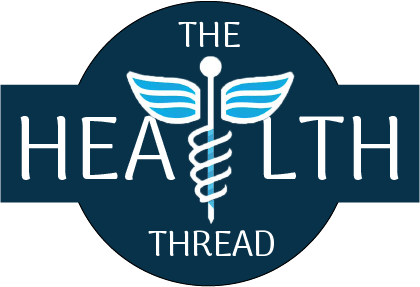Access to essential medicines
Access to essential medicines is a fundamental component of the right to health. However, many low- and middle-income countries face significant challenges in providing affordable and quality medicines to their populations. The high cost of medicines, inadequate healthcare infrastructure, and weak supply chain management systems are some of the barriers that prevent people from accessing the medicines they need. This essay explores the efforts to increase access to essential medicines in low- and middle-income countries, focusing on initiatives to lower drug prices and improve supply chain management.
Lowering Drug Prices:
One of the most significant barriers to accessing essential medicines is the high cost of drugs. To address this issue, several initiatives have been implemented to lower drug prices in low- and middle-income countries.
Generic Medicines: Generic medicines are copies of branded drugs that have the same active ingredients and therapeutic effects. They are typically much cheaper than branded drugs and can be an effective way of increasing access to essential medicines. The World Health Organization (WHO) has identified generic medicines as a key strategy for improving access to medicines, particularly in low- and middle-income countries (1).
Voluntary Licensing: Voluntary licensing is a mechanism that allows pharmaceutical companies to license their patents to other manufacturers, typically in low- and middle-income countries. This enables the production of cheaper generic versions of essential medicines, increasing access to these medicines in countries where they are needed most. Initiatives such as the Medicines Patent Pool have successfully negotiated voluntary licenses for several essential medicines, including HIV/AIDS drugs (2).
Price Negotiation: Governments can negotiate with pharmaceutical companies to lower the prices of essential medicines. For example, several low- and middle-income countries have implemented price negotiation policies for hepatitis C drugs, leading to significant reductions in drug prices (3).
Improving Supply Chain Management:
Weak supply chain management systems are another significant barrier to accessing essential medicines in low- and middle-income countries. These systems are responsible for the distribution of medicines from manufacturers to patients, and any weaknesses in the supply chain can result in stockouts or the delivery of expired or counterfeit drugs. Several initiatives have been implemented to improve supply chain management systems in low- and middle-income countries.
M-Health: Mobile health (m-health) technologies can be used to improve supply chain management systems. For example, in Tanzania, a system was developed that uses mobile phones to track the distribution of essential medicines, reducing stockouts and improving drug availability (4).
Public-Private Partnerships: Public-private partnerships can also be used to improve supply chain management. For example, the USAID Global Health Supply Chain Program has partnered with local organizations in several countries to improve the distribution of essential medicines and health commodities (5).
Strengthening Regulatory Systems:
Strengthening regulatory systems is critical for ensuring that essential medicines are of high quality and are safe and effective. In low- and middle-income countries, weak regulatory systems can result in the availability of substandard or counterfeit medicines, which can be harmful to patients. Several initiatives have been implemented to strengthen regulatory systems in low- and middle-income countries.
WHO Prequalification Program: The WHO prequalification program assesses the quality, safety, and efficacy of essential medicines, vaccines, and diagnostics. Prequalification is a key requirement for many international procurement agencies, and it can increase the availability of high-quality essential medicines in low- and middle-income countries (6).
Conclusion:
Access to essential medicines is a critical component of the right to health. However, many low- and middle-income countries face significant barriers to providing affordable and quality medicines to their populations. Initiatives such as lowering drug prices, improving supply chain management, and strengthening regulatory systems can be effective ways of increasing access to essential medicines in low- and middle-income countries. The promotion of generic medicines through voluntary licensing and price negotiation can significantly lower the cost of essential drugs, making them more accessible to those in need. Additionally, improving supply chain management through the use of mobile health technologies and public-private partnerships can ensure the efficient distribution of medicines, reducing stockouts and improving availability. Strengthening regulatory systems, such as the WHO prequalification program, can enhance the quality and safety of essential medicines, protecting patients from substandard or counterfeit drugs.
By implementing these researched possibilities, low- and middle-income countries can overcome barriers and improve access to essential medicines, ultimately contributing to better health outcomes for their populations.
REFERENCES
- World Health Organization (WHO). (2020). Equitable access to essential medicines: a framework for collective action. Retrieved from https://www.who.int/medicines/areas/access/EMlFramework.pdf
- Medicines Patent Pool. (n.d.). Access & licensing. Retrieved from https://medicinespatentpool.org/access-licensing/
- Wirtz, V. J., Hogerzeil, H. V., Gray, A. L., Bigdeli, M., de Joncheere, C. P., Ewen, M. A., … & Yadav, P. (2016). Essential medicines for universal health coverage. The Lancet, 389(10067), 403-476.
- Tan, K. R., Bloom, G., & Erlen, J. A. (2013). Mobile health (mHealth) technologies and low-income countries: market dynamics, technology affordability, and public and private roles. Journal of Medical Internet Research, 15(4), e82.
- USAID Global Health Supply Chain Program. (n.d.). Improving supply chains. Retrieved from https://www.ghsupplychain.org/what-we-do/improving-supply-chains
- World Health Organization (WHO). (2020). Prequalification of medicines. Retrieved from https://www.who.int/medicines/regulation/prequalification/en/


